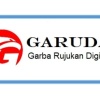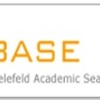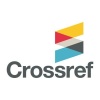Development of mathematical literacy instruments using batik Banten context for junior high school
Abstract
Full Text:
PDFReferences
Aini, I. N., Zulkardi, Putri, R. I. I., & Yaniawati, P. (2022). Developing PISA-Like Math Problems In The Content Of Space And Shape Through The Context Of Historical Buildings. Journal on Mathematics Education, 13(4), 723–738. https://doi.org/10.22342/jme.v13i4.pp723-738
Baroroh, U., Tririnika, Y., & Yuliani, I. (2019). Mathematic Literation Abilities Based on PISA-Like. Journal of Mathematics and Mathematics Education, 9(2), 8. https://doi.org/10.20961/jmme.v9i2.48393
Dinarti, S., Qomariyah, U. N., & Agustina. (2023). Kemampuan Literasi Matematika Siswa Dalam Menyelesaikan Masalah Pola Bilangan Berbasis Etnomatika Budaya Jombang. Jurnal Pendidikan Matematika, 14(2), 103–112. http://ojs.uho.ac.id/index.php/jpm
Fajriyah, E. (2018). Peran Etnomatematika Terkait Konsep Matematika Dalam Mendukung Literasi. PRISMA, Prosiding Seminar Nasional Matematika, 1, 114–119.
Habibi, & Suparman. (2020). Literasi Matematika Dalam Menyambut PISA 2021 Berdasarkan Kecakapan Abad 21. JKPM: Jurnal Kajian Pendidikan Matematika, 6(1), 57–64. https://doi.org/http://dx.doi.org/10.30998/jkpm.v6i1.8177
Hoogland, K., Pepin, B., de Koning, J., Bakker, A., & Gravemeijer, K. (2018). Word Problems Versus Image-Rich Problems: An Analysis Of Effects Of Task Characteristics On Students’ Performance On Contextual Mathematics Problems. Research in Mathematics Education, 20(1), 37–52. https://doi.org/10.1080/14794802.2017.1413414
Kehi, Y. J., M, Z., & Waluya, S. B. (2019). Kontribusi Etnomatematika Sebagai Masalah Kontekstual Dalam Mengembangkan Literasi Matematika. Prisma, Prosiding Seminar Nasional Matematika, 2, 190–196.
Mahpudin, M., & Yuliati, Y. (2019). Peran Budaya Lokal Terhadap Literasi Matematika Siswa Sekolah Dasar Di Cirebon. Proceedings of The ICECRS, 2(1), 287–292. https://doi.org/10.21070/picecrs.v2i1.2402
Nurkamilah, M., M Fahmi, N., & Aep, S. (2018). Mengembangkan Literasi Matematika Siswa Sekolah Dasar melalui Pembelajaran Matematika Realistik Indonesia. Jurnal Theorems (The Original Research of Mathematics), 2(2), 70–79. https://doi.org/70–79. https://doi.org/10.31949/TH.V212.722
OECD. (2023). Pisa 2022 Results (Volume I): The State of Learning and Equity in Education. In PISA, OECD: Vol. I. https://doi.org/https://doi.org/10.1787/53f23881-en
Rachmawati, N., M.S, Z., Edwita, & Arita. (2021). Analisis Penerapan Pembelajaran Hybrid pada Keterampilan Literasi Digital DI Sekolah Dasar. Jurnal Cakrawala Pendas, 8(1)(1), 203–216.
Rimma, N. (2016). What Makes A Mathematical Task Interesting? Educational Research and Reviews, 11(16), 1509–1520. https://doi.org/10.5897/err2016.2919
Safira, F., Prabawati, A. T., Safiri, A. D., & Kusuma, J. W. (2021). Etnomatematika : Nilai Filosofis Dan Konsep Matematika Pada Motif Batik Banten. Himpunan: Jurnal Ilmiah Mahasiswa Pendidikan Matematika, 1, 162–168.
Sari, R. H. N. (2015). Literasi matematika: Apa, Mengapa Dan Bagaimana? Seminar Nasional Matematika Dan Pendidikan Matematika UNY, 8, 713–720.
Susanta, A., Sumardi, H., Susanto, E., & Retnawati, H. (2023). Mathematics Literacy Task On Number Pattern Using Bengkulu Context For Junior High School Students. Journal on Mathematics Education, 14(1), 85–102. https://doi.org/10.22342/JME.V14I1.PP85-102
Widjaja, W. (2013). The Use Of Contextual Problems To Support Mathematical Learning. Journal on Mathematics Education, 4(2), 151–159. https://doi.org/10.22342/jme.4.2.413.151-159
DOI: http://dx.doi.org/10.48181/tirtamath.v6i1.25406
Refbacks
- There are currently no refbacks.
Copyright (c) 2024 TIRTAMATH: Jurnal Penelitian dan Pengajaran Matematika
Ciptaan disebarluaskan di bawah Lisensi Creative Commons Atribusi 4.0 Internasional .
Tirtamath: Jurnal Penelitian dan Pengajaran Matematika. Jurnal ini diterbitkan oleh Program Studi Magister Pendidikan Matematika Universitas Sultan Ageng Tirtayasa (cetak) dan Jurnal Untirta (eprint).
Alamat Penerbit: Program Studi Magister Pendidikan Matematika Kampus FKIP Untirta Jl. Ciwaru Raya, Cipare, Kec. Serang, Kota Serang, Banten 42117, Email: [email protected] |Klik untuk mengakses: Tirtamath: Jurnal Penelitian dan Pengajaran Matematika






